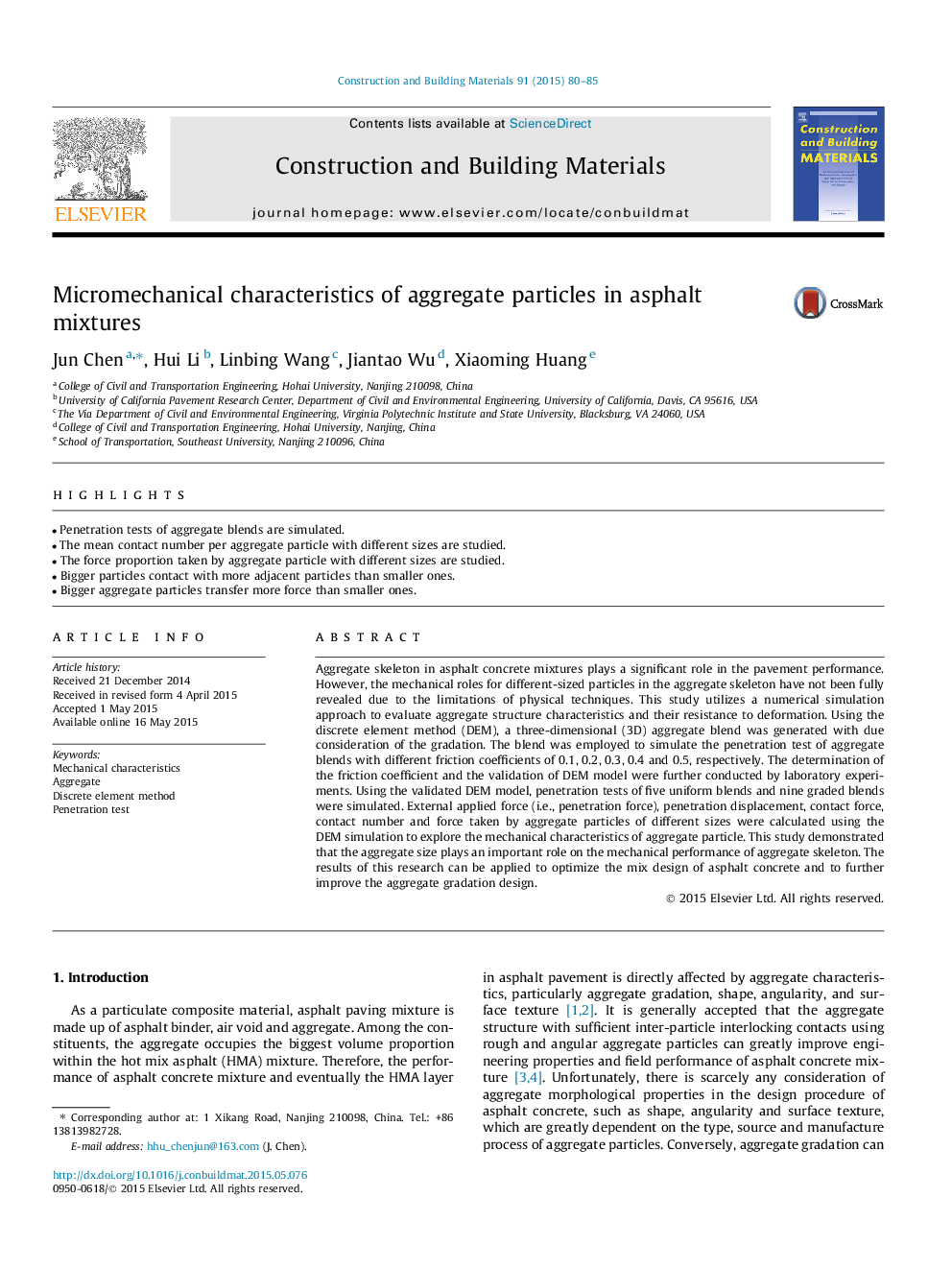| Article ID | Journal | Published Year | Pages | File Type |
|---|---|---|---|---|
| 256867 | Construction and Building Materials | 2015 | 6 Pages |
•Penetration tests of aggregate blends are simulated.•The mean contact number per aggregate particle with different sizes are studied.•The force proportion taken by aggregate particle with different sizes are studied.•Bigger particles contact with more adjacent particles than smaller ones.•Bigger aggregate particles transfer more force than smaller ones.
Aggregate skeleton in asphalt concrete mixtures plays a significant role in the pavement performance. However, the mechanical roles for different-sized particles in the aggregate skeleton have not been fully revealed due to the limitations of physical techniques. This study utilizes a numerical simulation approach to evaluate aggregate structure characteristics and their resistance to deformation. Using the discrete element method (DEM), a three-dimensional (3D) aggregate blend was generated with due consideration of the gradation. The blend was employed to simulate the penetration test of aggregate blends with different friction coefficients of 0.1, 0.2, 0.3, 0.4 and 0.5, respectively. The determination of the friction coefficient and the validation of DEM model were further conducted by laboratory experiments. Using the validated DEM model, penetration tests of five uniform blends and nine graded blends were simulated. External applied force (i.e., penetration force), penetration displacement, contact force, contact number and force taken by aggregate particles of different sizes were calculated using the DEM simulation to explore the mechanical characteristics of aggregate particle. This study demonstrated that the aggregate size plays an important role on the mechanical performance of aggregate skeleton. The results of this research can be applied to optimize the mix design of asphalt concrete and to further improve the aggregate gradation design.
